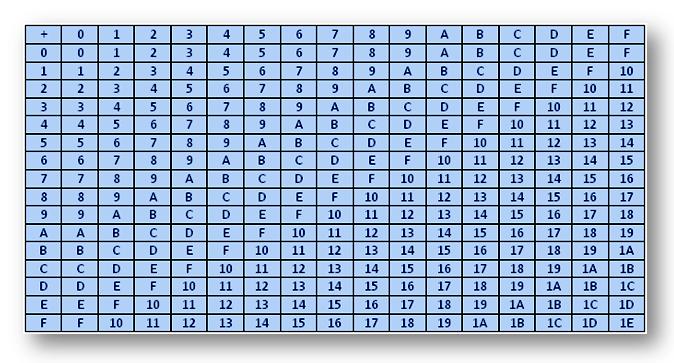Subscribe to our ▶️ YouTube channel 🔴 for the latest videos, updates, and tips.
Hexadecimal Addition and Subtraction
How to do hexadecimal addition and subtraction?
Here we will discuss about solving hexadecimal addition and subtraction.
Hexadecimal Addition:
The table for hexadecimal addition is as follows:

Addition of hexadecimal numbers can be easily carried with the help of the above table.
Following example illustrates the use of the table.
Solution:
We note from the table that
|
3 + E = 11 A + D = 17 17 + 1 (carry) = 18 B + 5 = 10 10 + 1 (carry) = 11 |
1 1 carry B A 3 5 D E 1 1 8 1 |
Hence the required sum is 1181 in hexadecimal.
__________________________________________________________
Hexadecimal Subtraction:
Subtraction of hexadecimal numbers can be accomplished by using complement method. Although it is not a very simple method computers use it very efficiently.
These above explanation will help you to understand the concept about hexadecimal addition and subtraction.
From Hexadecimal Addition and Subtraction to HOME PAGE
Didn't find what you were looking for? Or want to know more information about Math Only Math. Use this Google Search to find what you need.


New! Comments
Have your say about what you just read! Leave me a comment in the box below. Ask a Question or Answer a Question.